Empower Your Home with MobPow’s Smart Solar Storage Systems
Description:
Index:
- Overview of MobPow Home Solar Storage System
- Core Technologies of MobPow Home Solar Storage System
- Principle of Solar Storage System
- Types of Home Solar Storage Systems: A Comprehensive Overview
- Applications of Home Solar Storage Systems
- Specific Real-World Application Scenarios for Home Solar Storage Systems
- MobPow Home Solar Storage Systems: Unleashing the Power of Sustainable Energy
With the growing global focus on renewable energy and environmental protection, home solar storage systems, as an efficient and green energy solution, are gradually becoming a new trend in household energy consumption. In this field, MobPow mobile energy has injected new vitality into the field of home solar storage with its excellent technical strength and innovative spirit.
Overview of MobPow Home Solar Storage System
MobPow home solar storage system adopts advanced photovoltaic technology and efficient energy storage devices to convert solar energy into electricity and store it to provide homes with a stable and reliable power supply. The system has the characteristics of high efficiency, environmental protection, and intelligence, and can meet the daily power consumption needs of families, reduce electricity bills, and reduce reliance on traditional energy sources.
Core Technologies of MobPow Home Solar Storage System
MobPow mobile energy home solar storage system adopts advanced technologies to ensure its high efficiency, reliability, and intelligence, including:
-
High-efficiency photovoltaic technology: MobPow utilizes high-efficiency photovoltaic modules to convert solar energy into electricity efficiently, maximizing energy utilization.
-
Advanced energy storage technology: The system is equipped with advanced energy storage devices, such as high-performance lithium-ion batteries, which boast long lifespans, high safety, and fast charging and discharging capabilities, ensuring stable storage and supply of electricity.
-
Intelligent management technology: MobPow home solar storage systems come with intelligent controllers and inverters that enable intelligent scheduling and management of electricity, enhancing energy utilization efficiency and reducing operating costs.
These core technologies work together to provide a reliable and efficient energy solution for homes, enabling users to enjoy the benefits of solar energy while reducing their reliance on traditional power sources.
Principle of Solar Storage System
A solar storage system primarily involves two processes: photovoltaic power generation and energy storage.
-
Photovoltaic Power Generation: The fundamental principle behind photovoltaic power generation is the photoelectric effect in semiconductors. Solar panels, composed of numerous photodiodes, first receive sunlight and convert its energy into electrical energy. Through the photoelectric effect, the positive and negative charge carriers generated by the photovoltaic power station are separated into different regions, forming a current that can be conducted through an external circuit. An inverter converts the direct current (DC) into alternating current (AC) for household use or grid injection.
-
Photovoltaic Energy Storage: During the charging process, sunlight strikes the photovoltaic panels, exciting the electrons within the panels and generating DC electricity. This DC power is then converted into AC power through an inverter and delivered to energy storage devices, such as battery packs. These battery packs store the electrical energy for later use.
-
Discharging Process: When the energy demand exceeds the current energy output of the photovoltaic power generation system, the energy storage system is activated to provide a power supply.
In essence, the solar storage system harnesses solar energy, converts it into a usable form, stores it for later use, and provides a reliable power source when needed.
Types of Home Solar Storage Systems: A Comprehensive Overview
Home solar storage systems have emerged as a game-changer in the realm of household energy consumption, offering a sustainable and efficient solution to power needs. These systems combine the benefits of solar power generation with energy storage capabilities, enabling homeowners to harness the sun’s energy, store it for later use, and reduce their reliance on traditional grid electricity.
To fully understand the diverse options available, let’s delve into the four main types of home solar storage systems:
1. Hybrid Solar Storage Systems:
Hybrid solar storage systems seamlessly integrate the advantages of both off-grid and grid-tied systems, providing the ultimate flexibility and energy independence.
-
System Components:
- Photovoltaic (PV) panels
- Hybrid inverter
- Battery bank
- Grid connection
-
Working Principle:
-
Priority to Self-Consumption: During normal grid operation, the system prioritizes utilizing solar energy to power household appliances, maximizing the use of renewable energy.
-
Storing Excess Energy: Surplus solar energy that cannot be immediately consumed is stored in the battery bank for later use, ensuring that no solar generation goes to waste.
-
Grid Backup: When grid power becomes unavailable or expensive, the battery bank seamlessly takes over, providing a reliable backup power source to maintain uninterrupted electricity supply.
-
-
Characteristics:
-
Comprehensive Energy Management: Hybrid systems offer the most comprehensive energy management capabilities, combining the benefits of both off-grid and grid-tied systems.
-
Uninterrupted Power Supply: They ensure a continuous and reliable power supply, even during grid outages, providing peace of mind and energy security.
-
Greater Control and Cost Savings: Users gain greater control over their energy consumption and potential cost savings by optimizing energy usage and reducing grid reliance.
-
2. Grid-Tied Solar Storage Systems:
Grid-tied solar storage systems leverage the stability of the grid while incorporating energy storage for enhanced self-reliance.
-
System Components:
- PV panels
- Microinverter or string inverter
- Battery bank
- Grid connection
-
Working Principle:
-
Prioritizing Solar Power: Grid-tied systems prioritize supplying electricity directly to household loads, maximizing the utilization of solar energy.
-
Selling Excess Solar: Surplus solar energy that cannot be immediately consumed is exported to the grid, typically at a preferential rate, generating potential income for the homeowner.
-
Grid Backup and Supplement: When grid power is unavailable or expensive, the battery bank supplements the household’s energy needs, ensuring a continuous and reliable power supply.
-
-
Characteristics:
-
Balancing Solar and Grid Power: Grid-tied systems combine the benefits of solar power generation with the stability and backup power of the grid.
-
Potential Income from Excess Solar: Selling excess solar energy to the grid can generate income for homeowners, offsetting the initial investment costs.
-
Grid Compatibility and Ease of Installation: Grid-tied systems are compatible with the existing grid infrastructure and offer relatively easy installation.
-
3. Off-Grid Solar Storage Systems:
Off-grid solar storage systems provide complete energy independence, ideal for remote areas or those with unreliable grid access.
-
System Components:
- PV panels
- Charge controller
- Battery bank
- Inverter
- (Optional) Backup generator
-
Working Principle:
-
Solar Energy Generation: PV panels convert sunlight directly into electricity.
-
Battery Storage: The charge controller regulates the flow of electricity from the PV panels to the battery bank, storing excess energy for later use.
-
Inverter for AC Power: When needed, the inverter converts the stored DC (direct current) electricity from the battery bank into AC (alternating current) power for household appliances.
-
Backup Generator (Optional): For additional reliability, a backup generator can be integrated to provide power during extended periods of insufficient solar generation.
-
-
Characteristics:
-
Complete Energy Independence: Off-grid systems provide complete self-reliance, ideal for remote locations or areas with unreliable grid access.
-
Resilient Power Supply: They offer a resilient power supply, ensuring uninterrupted electricity even during grid outages.
-
Careful System Sizing: Careful sizing of the PV array and battery bank is crucial to meet daily energy demands throughout the year.
-
4. Seasonal Solar Storage Systems:
Seasonal solar storage systems are designed to address the seasonal variations in solar energy production, storing summer surplus for winter use.
-
System Components:
- PV panels
- Battery bank with high capacity and efficiency
- Charge controller
- Inverter
-
Working Principle:
-
Summer Energy Storage: This excess electricity is directed towards the battery bank with high capacity and efficiency, specifically designed to store large amounts of energy for extended periods.
-
Winter Energy Utilization: In the winter months when solar radiation is limited, the stored energy in the battery bank is released to supplement or entirely replace grid-supplied electricity, depending on the system’s capacity and household needs.
-
Characteristics:
-
Seasonal Energy Management: Seasonal solar storage systems address the challenge of seasonal variations in solar energy production, allowing for efficient utilization of solar energy throughout the year.
-
High-Capacity and Efficient Batteries: These systems require high-capacity and efficient batteries to store large amounts of energy for extended periods, potentially impacting the initial investment cost.
-
Enhanced Sustainability: By effectively utilizing summer solar generation during winter, seasonal storage systems contribute to a more sustainable and renewable energy future.
-
-
Applications of Home Solar Storage Systems
Home solar storage systems have a wide range of applications, encompassing various sectors from everyday life to specialized environmental needs. Here’s a detailed overview of their primary application scenarios:
1. Residential Applications:
In the realm of residential applications, home solar storage systems have become a prevalent energy solution. Many households opt for rooftop photovoltaic panels to convert solar energy into electricity for their daily needs. Coupled with energy storage devices, these systems can provide continuous and stable power during nighttime or on cloudy days when sunlight is insufficient.
2. Rural and Remote Areas:
In rural and remote regions, inadequate grid coverage or unstable power supply is a common issue. Home solar storage systems can provide a reliable source of electricity for residents in these areas, meeting their basic needs for living and production.
3. Transportation and Communication Applications:
The transportation and communication sectors also hold immense potential for photovoltaic and energy storage systems. For instance, electric vehicle charging stations, highway service areas, and communication base stations can all utilize photovoltaic and energy storage systems to ensure a stable power supply. This not only helps reduce reliance on traditional energy sources but also enhances energy efficiency and lowers operational costs for these facilities.
4. Public Facilities and Landscape Applications:
Public facilities and landscape projects are another significant area where photovoltaic and energy storage systems can make a substantial impact. Parks, plazas, street lighting, and other public facilities can harness these systems to achieve a green and eco-friendly energy supply. Additionally, photovoltaic panels can be integrated with architectural and landscape design elements, creating aesthetically pleasing and practical photovoltaic building-integrated designs that enhance the cityscape.
5. Island and Ship Applications:
For unique environments like islands and ships, photovoltaic and energy storage systems offer distinct advantages. These areas often face challenges in grid access or unstable power supply, and photovoltaic and energy storage systems can provide a reliable source of electricity to meet their living and production needs.
6. Commercial and Industrial Applications:
Large commercial buildings and industrial facilities typically have extensive rooftop spaces, making them ideal for installing photovoltaic panels. By employing photovoltaic and energy storage systems, these structures can achieve self-sufficient power supply, reduce energy costs, and enhance energy efficiency. Moreover, energy storage systems can serve as backup power sources to ensure power supply stability during emergencies.
In conclusion, home solar storage systems have revolutionized the way households and various industries approach energy consumption. Their ability to harness solar energy, store it for later use, and provide a reliable power source makes them a sustainable and efficient solution for a wide range of applications. As technology continues to advance and costs decline, the adoption of these systems is expected to grow even further, paving the way for a more sustainable and energy-independent future.
Specific Real-World Application Scenarios for Home Solar Storage Systems:
In addition to the broader application areas discussed earlier, home solar storage systems have gained traction in several specific real-world scenarios:
1. Independent Houses and Villas:
For independent houses and villas, home solar storage systems offer an ideal energy solution. Solar panels installed on rooftops can effectively harness solar energy, converting sunlight into electricity. This power not only meets daily household needs, such as lighting, televisions, and computers, but also provides sufficient energy for high-power appliances like air conditioners and refrigerators. In the event of grid outages or unstable power supply, energy storage systems ensure continuous and reliable electricity for the household.
2. Remote and Off-Grid Areas:
In remote regions or areas lacking grid access, power supply is often a challenge. Home solar storage systems can provide a reliable power source for residents in these areas. Whether in remote villages, mountainous areas, or islands, as long as there is sufficient sunlight, solar storage systems can be installed to meet daily living and work electricity needs.
3. Backup Power:
For locations that require uninterrupted power supply, such as hospitals, data centers, and communication base stations, home solar storage systems can serve as backup power sources. In case of grid failures or outages, energy storage systems can quickly switch to independent power supply mode, ensuring the normal operation of critical equipment.
4. Self-Sufficient Communities:
Some communities choose to establish self-sufficient energy systems to reduce reliance on the traditional grid. Home solar storage systems can become an integral part of these community energy systems. Residents can share solar storage systems to lower energy costs, enhance energy efficiency, and promote community sustainability.
5. Outdoor Activities and Emergency Power:
For outdoor activities like camping and picnics, home solar storage systems can be used as portable power sources. They can be charged and store energy, providing power support for electronic devices such as mobile phones, tablets, and lights. Additionally, in the event of natural disasters or emergencies, solar storage systems can also serve as emergency power sources, providing electricity for relief efforts and affected communities.
6. Electric Vehicle Charging:
With the growing popularity of electric vehicles, the demand for charging infrastructure at homes is also increasing. Home solar storage systems can be combined with electric vehicle charging stations to utilize solar energy for charging electric vehicles. This not only reduces electricity costs but also minimizes dependence on traditional energy sources, promoting green transportation.
Home solar storage systems demonstrate immense versatility and potential in real-world applications. Whether for daily household electricity, remote area power supply, backup power, outdoor activities, or electric vehicle charging, home solar storage systems offer reliable and efficient energy solutions. As technology advances and costs decline, the application and promotion of home solar storage systems are expected to expand even further in the future.
In conclusion, home solar storage systems boast a wide range of application scenarios, extending beyond daily household electricity needs to provide reliable power supply for various sectors, including rural areas, remote regions, transportation and communication, public facilities, islands and ships, and commercial and industrial applications. With continuous technological advancements and cost reductions, the future prospects for home solar storage systems are exceptionally promising.
MobPow Home Solar Storage Systems: Unleashing the Power of Sustainable Energy
Harnessing the Sun’s Energy for a Sustainable Future
MobPow Home Solar Storage Systems are revolutionizing the way households approach energy consumption, offering a clean, reliable, and cost-effective solution for powering homes with the sun’s abundant energy. These innovative systems seamlessly integrate photovoltaic (PV) panels, energy storage units, and intelligent control systems to provide a comprehensive energy management solution for homeowners.
Unveiling the Advantages of MobPow Home Solar Storage Systems:
1. Embracing Sustainability:
MobPow Home Solar Storage Systems embody the principles of sustainability by harnessing solar energy, a renewable and abundant resource. By reducing reliance on traditional fossil fuels, these systems minimize carbon emissions and contribute to a cleaner, healthier environment.
2. Unwavering Reliability:
Even in the face of grid disruptions or power outages, MobPow Home Solar Storage Systems stand as a pillar of reliability. Their independent operation ensures uninterrupted power supply, safeguarding homes from the inconvenience and potential hazards of power outages.
3. Economic Empowerment:
MobPow Home Solar Storage Systems empower homeowners with financial savings. As the cost of PV technology continues to decline, these systems offer a long-term investment that reduces electricity bills and promotes energy independence.
4. Intelligent Energy Management:
At the heart of MobPow Home Solar Storage Systems lies intelligent control. Advanced controllers and inverters optimize energy distribution, while user-friendly mobile apps and web interfaces provide real-time insights into system performance and energy consumption.
MobPow: Pioneering the Future of Home Solar Storage
With a deep understanding of PV and energy storage technologies, MobPow is at the forefront of innovation in the home solar storage sector. Their commitment to developing high-efficiency, reliable, and intelligent systems positions them as a leading provider of sustainable energy solutions for homeowners worldwide.
A Glimpse into the Bright Future of Home Solar Storage
The adoption of renewable energy sources and the growing demand for clean energy solutions paint a promising future for MobPow Home Solar Storage Systems. As government policies support the transition to sustainable energy and market demand continues to rise, MobPow is well-positioned to play a pivotal role in shaping the future of home energy consumption.
Conclusion:
MobPow Home Solar Storage Systems represent a paradigm shift in home energy solutions, offering a sustainable, reliable, and cost-effective path towards a cleaner energy future. With their unwavering commitment to innovation and customer satisfaction, MobPow is poised to empower homeowners worldwide to embrace the power of the sun and redefine their energy landscape.
Share this:
Related All-in-One Solutions
Empower Your Home with MobPow’s Smart Solar Storage Systems
Description:
Index:
- Overview of MobPow Home Solar Storage System
- Core Technologies of MobPow Home Solar Storage System
- Principle of Solar Storage System
- Types of Home Solar Storage Systems: A Comprehensive Overview
- Applications of Home Solar Storage Systems
- Specific Real-World Application Scenarios for Home Solar Storage Systems
- MobPow Home Solar Storage Systems: Unleashing the Power of Sustainable Energy
With the growing global focus on renewable energy and environmental protection, home solar storage systems, as an efficient and green energy solution, are gradually becoming a new trend in household energy consumption. In this field, MobPow mobile energy has injected new vitality into the field of home solar storage with its excellent technical strength and innovative spirit.
Overview of MobPow Home Solar Storage System
MobPow home solar storage system adopts advanced photovoltaic technology and efficient energy storage devices to convert solar energy into electricity and store it to provide homes with a stable and reliable power supply. The system has the characteristics of high efficiency, environmental protection, and intelligence, and can meet the daily power consumption needs of families, reduce electricity bills, and reduce reliance on traditional energy sources.
Core Technologies of MobPow Home Solar Storage System
MobPow mobile energy home solar storage system adopts advanced technologies to ensure its high efficiency, reliability, and intelligence, including:
-
High-efficiency photovoltaic technology: MobPow utilizes high-efficiency photovoltaic modules to convert solar energy into electricity efficiently, maximizing energy utilization.
-
Advanced energy storage technology: The system is equipped with advanced energy storage devices, such as high-performance lithium-ion batteries, which boast long lifespans, high safety, and fast charging and discharging capabilities, ensuring stable storage and supply of electricity.
-
Intelligent management technology: MobPow home solar storage systems come with intelligent controllers and inverters that enable intelligent scheduling and management of electricity, enhancing energy utilization efficiency and reducing operating costs.
These core technologies work together to provide a reliable and efficient energy solution for homes, enabling users to enjoy the benefits of solar energy while reducing their reliance on traditional power sources.
Principle of Solar Storage System
A solar storage system primarily involves two processes: photovoltaic power generation and energy storage.
-
Photovoltaic Power Generation: The fundamental principle behind photovoltaic power generation is the photoelectric effect in semiconductors. Solar panels, composed of numerous photodiodes, first receive sunlight and convert its energy into electrical energy. Through the photoelectric effect, the positive and negative charge carriers generated by the photovoltaic power station are separated into different regions, forming a current that can be conducted through an external circuit. An inverter converts the direct current (DC) into alternating current (AC) for household use or grid injection.
-
Photovoltaic Energy Storage: During the charging process, sunlight strikes the photovoltaic panels, exciting the electrons within the panels and generating DC electricity. This DC power is then converted into AC power through an inverter and delivered to energy storage devices, such as battery packs. These battery packs store the electrical energy for later use.
-
Discharging Process: When the energy demand exceeds the current energy output of the photovoltaic power generation system, the energy storage system is activated to provide a power supply.
In essence, the solar storage system harnesses solar energy, converts it into a usable form, stores it for later use, and provides a reliable power source when needed.
Types of Home Solar Storage Systems: A Comprehensive Overview
Home solar storage systems have emerged as a game-changer in the realm of household energy consumption, offering a sustainable and efficient solution to power needs. These systems combine the benefits of solar power generation with energy storage capabilities, enabling homeowners to harness the sun’s energy, store it for later use, and reduce their reliance on traditional grid electricity.
To fully understand the diverse options available, let’s delve into the four main types of home solar storage systems:
1. Hybrid Solar Storage Systems:
Hybrid solar storage systems seamlessly integrate the advantages of both off-grid and grid-tied systems, providing the ultimate flexibility and energy independence.
-
System Components:
- Photovoltaic (PV) panels
- Hybrid inverter
- Battery bank
- Grid connection
-
Working Principle:
-
Priority to Self-Consumption: During normal grid operation, the system prioritizes utilizing solar energy to power household appliances, maximizing the use of renewable energy.
-
Storing Excess Energy: Surplus solar energy that cannot be immediately consumed is stored in the battery bank for later use, ensuring that no solar generation goes to waste.
-
Grid Backup: When grid power becomes unavailable or expensive, the battery bank seamlessly takes over, providing a reliable backup power source to maintain uninterrupted electricity supply.
-
-
Characteristics:
-
Comprehensive Energy Management: Hybrid systems offer the most comprehensive energy management capabilities, combining the benefits of both off-grid and grid-tied systems.
-
Uninterrupted Power Supply: They ensure a continuous and reliable power supply, even during grid outages, providing peace of mind and energy security.
-
Greater Control and Cost Savings: Users gain greater control over their energy consumption and potential cost savings by optimizing energy usage and reducing grid reliance.
-
2. Grid-Tied Solar Storage Systems:
Grid-tied solar storage systems leverage the stability of the grid while incorporating energy storage for enhanced self-reliance.
-
System Components:
- PV panels
- Microinverter or string inverter
- Battery bank
- Grid connection
-
Working Principle:
-
Prioritizing Solar Power: Grid-tied systems prioritize supplying electricity directly to household loads, maximizing the utilization of solar energy.
-
Selling Excess Solar: Surplus solar energy that cannot be immediately consumed is exported to the grid, typically at a preferential rate, generating potential income for the homeowner.
-
Grid Backup and Supplement: When grid power is unavailable or expensive, the battery bank supplements the household’s energy needs, ensuring a continuous and reliable power supply.
-
-
Characteristics:
-
Balancing Solar and Grid Power: Grid-tied systems combine the benefits of solar power generation with the stability and backup power of the grid.
-
Potential Income from Excess Solar: Selling excess solar energy to the grid can generate income for homeowners, offsetting the initial investment costs.
-
Grid Compatibility and Ease of Installation: Grid-tied systems are compatible with the existing grid infrastructure and offer relatively easy installation.
-
3. Off-Grid Solar Storage Systems:
Off-grid solar storage systems provide complete energy independence, ideal for remote areas or those with unreliable grid access.
-
System Components:
- PV panels
- Charge controller
- Battery bank
- Inverter
- (Optional) Backup generator
-
Working Principle:
-
Solar Energy Generation: PV panels convert sunlight directly into electricity.
-
Battery Storage: The charge controller regulates the flow of electricity from the PV panels to the battery bank, storing excess energy for later use.
-
Inverter for AC Power: When needed, the inverter converts the stored DC (direct current) electricity from the battery bank into AC (alternating current) power for household appliances.
-
Backup Generator (Optional): For additional reliability, a backup generator can be integrated to provide power during extended periods of insufficient solar generation.
-
-
Characteristics:
-
Complete Energy Independence: Off-grid systems provide complete self-reliance, ideal for remote locations or areas with unreliable grid access.
-
Resilient Power Supply: They offer a resilient power supply, ensuring uninterrupted electricity even during grid outages.
-
Careful System Sizing: Careful sizing of the PV array and battery bank is crucial to meet daily energy demands throughout the year.
-
4. Seasonal Solar Storage Systems:
Seasonal solar storage systems are designed to address the seasonal variations in solar energy production, storing summer surplus for winter use.
-
System Components:
- PV panels
- Battery bank with high capacity and efficiency
- Charge controller
- Inverter
-
Working Principle:
-
Summer Energy Storage: This excess electricity is directed towards the battery bank with high capacity and efficiency, specifically designed to store large amounts of energy for extended periods.
-
Winter Energy Utilization: In the winter months when solar radiation is limited, the stored energy in the battery bank is released to supplement or entirely replace grid-supplied electricity, depending on the system’s capacity and household needs.
-
Characteristics:
-
Seasonal Energy Management: Seasonal solar storage systems address the challenge of seasonal variations in solar energy production, allowing for efficient utilization of solar energy throughout the year.
-
High-Capacity and Efficient Batteries: These systems require high-capacity and efficient batteries to store large amounts of energy for extended periods, potentially impacting the initial investment cost.
-
Enhanced Sustainability: By effectively utilizing summer solar generation during winter, seasonal storage systems contribute to a more sustainable and renewable energy future.
-
-
Applications of Home Solar Storage Systems
Home solar storage systems have a wide range of applications, encompassing various sectors from everyday life to specialized environmental needs. Here’s a detailed overview of their primary application scenarios:
1. Residential Applications:
In the realm of residential applications, home solar storage systems have become a prevalent energy solution. Many households opt for rooftop photovoltaic panels to convert solar energy into electricity for their daily needs. Coupled with energy storage devices, these systems can provide continuous and stable power during nighttime or on cloudy days when sunlight is insufficient.
2. Rural and Remote Areas:
In rural and remote regions, inadequate grid coverage or unstable power supply is a common issue. Home solar storage systems can provide a reliable source of electricity for residents in these areas, meeting their basic needs for living and production.
3. Transportation and Communication Applications:
The transportation and communication sectors also hold immense potential for photovoltaic and energy storage systems. For instance, electric vehicle charging stations, highway service areas, and communication base stations can all utilize photovoltaic and energy storage systems to ensure a stable power supply. This not only helps reduce reliance on traditional energy sources but also enhances energy efficiency and lowers operational costs for these facilities.
4. Public Facilities and Landscape Applications:
Public facilities and landscape projects are another significant area where photovoltaic and energy storage systems can make a substantial impact. Parks, plazas, street lighting, and other public facilities can harness these systems to achieve a green and eco-friendly energy supply. Additionally, photovoltaic panels can be integrated with architectural and landscape design elements, creating aesthetically pleasing and practical photovoltaic building-integrated designs that enhance the cityscape.
5. Island and Ship Applications:
For unique environments like islands and ships, photovoltaic and energy storage systems offer distinct advantages. These areas often face challenges in grid access or unstable power supply, and photovoltaic and energy storage systems can provide a reliable source of electricity to meet their living and production needs.
6. Commercial and Industrial Applications:
Large commercial buildings and industrial facilities typically have extensive rooftop spaces, making them ideal for installing photovoltaic panels. By employing photovoltaic and energy storage systems, these structures can achieve self-sufficient power supply, reduce energy costs, and enhance energy efficiency. Moreover, energy storage systems can serve as backup power sources to ensure power supply stability during emergencies.
In conclusion, home solar storage systems have revolutionized the way households and various industries approach energy consumption. Their ability to harness solar energy, store it for later use, and provide a reliable power source makes them a sustainable and efficient solution for a wide range of applications. As technology continues to advance and costs decline, the adoption of these systems is expected to grow even further, paving the way for a more sustainable and energy-independent future.
Specific Real-World Application Scenarios for Home Solar Storage Systems:
In addition to the broader application areas discussed earlier, home solar storage systems have gained traction in several specific real-world scenarios:
1. Independent Houses and Villas:
For independent houses and villas, home solar storage systems offer an ideal energy solution. Solar panels installed on rooftops can effectively harness solar energy, converting sunlight into electricity. This power not only meets daily household needs, such as lighting, televisions, and computers, but also provides sufficient energy for high-power appliances like air conditioners and refrigerators. In the event of grid outages or unstable power supply, energy storage systems ensure continuous and reliable electricity for the household.
2. Remote and Off-Grid Areas:
In remote regions or areas lacking grid access, power supply is often a challenge. Home solar storage systems can provide a reliable power source for residents in these areas. Whether in remote villages, mountainous areas, or islands, as long as there is sufficient sunlight, solar storage systems can be installed to meet daily living and work electricity needs.
3. Backup Power:
For locations that require uninterrupted power supply, such as hospitals, data centers, and communication base stations, home solar storage systems can serve as backup power sources. In case of grid failures or outages, energy storage systems can quickly switch to independent power supply mode, ensuring the normal operation of critical equipment.
4. Self-Sufficient Communities:
Some communities choose to establish self-sufficient energy systems to reduce reliance on the traditional grid. Home solar storage systems can become an integral part of these community energy systems. Residents can share solar storage systems to lower energy costs, enhance energy efficiency, and promote community sustainability.
5. Outdoor Activities and Emergency Power:
For outdoor activities like camping and picnics, home solar storage systems can be used as portable power sources. They can be charged and store energy, providing power support for electronic devices such as mobile phones, tablets, and lights. Additionally, in the event of natural disasters or emergencies, solar storage systems can also serve as emergency power sources, providing electricity for relief efforts and affected communities.
6. Electric Vehicle Charging:
With the growing popularity of electric vehicles, the demand for charging infrastructure at homes is also increasing. Home solar storage systems can be combined with electric vehicle charging stations to utilize solar energy for charging electric vehicles. This not only reduces electricity costs but also minimizes dependence on traditional energy sources, promoting green transportation.
Home solar storage systems demonstrate immense versatility and potential in real-world applications. Whether for daily household electricity, remote area power supply, backup power, outdoor activities, or electric vehicle charging, home solar storage systems offer reliable and efficient energy solutions. As technology advances and costs decline, the application and promotion of home solar storage systems are expected to expand even further in the future.
In conclusion, home solar storage systems boast a wide range of application scenarios, extending beyond daily household electricity needs to provide reliable power supply for various sectors, including rural areas, remote regions, transportation and communication, public facilities, islands and ships, and commercial and industrial applications. With continuous technological advancements and cost reductions, the future prospects for home solar storage systems are exceptionally promising.
MobPow Home Solar Storage Systems: Unleashing the Power of Sustainable Energy
Harnessing the Sun’s Energy for a Sustainable Future
MobPow Home Solar Storage Systems are revolutionizing the way households approach energy consumption, offering a clean, reliable, and cost-effective solution for powering homes with the sun’s abundant energy. These innovative systems seamlessly integrate photovoltaic (PV) panels, energy storage units, and intelligent control systems to provide a comprehensive energy management solution for homeowners.
Unveiling the Advantages of MobPow Home Solar Storage Systems:
1. Embracing Sustainability:
MobPow Home Solar Storage Systems embody the principles of sustainability by harnessing solar energy, a renewable and abundant resource. By reducing reliance on traditional fossil fuels, these systems minimize carbon emissions and contribute to a cleaner, healthier environment.
2. Unwavering Reliability:
Even in the face of grid disruptions or power outages, MobPow Home Solar Storage Systems stand as a pillar of reliability. Their independent operation ensures uninterrupted power supply, safeguarding homes from the inconvenience and potential hazards of power outages.
3. Economic Empowerment:
MobPow Home Solar Storage Systems empower homeowners with financial savings. As the cost of PV technology continues to decline, these systems offer a long-term investment that reduces electricity bills and promotes energy independence.
4. Intelligent Energy Management:
At the heart of MobPow Home Solar Storage Systems lies intelligent control. Advanced controllers and inverters optimize energy distribution, while user-friendly mobile apps and web interfaces provide real-time insights into system performance and energy consumption.
MobPow: Pioneering the Future of Home Solar Storage
With a deep understanding of PV and energy storage technologies, MobPow is at the forefront of innovation in the home solar storage sector. Their commitment to developing high-efficiency, reliable, and intelligent systems positions them as a leading provider of sustainable energy solutions for homeowners worldwide.
A Glimpse into the Bright Future of Home Solar Storage
The adoption of renewable energy sources and the growing demand for clean energy solutions paint a promising future for MobPow Home Solar Storage Systems. As government policies support the transition to sustainable energy and market demand continues to rise, MobPow is well-positioned to play a pivotal role in shaping the future of home energy consumption.
Conclusion:
MobPow Home Solar Storage Systems represent a paradigm shift in home energy solutions, offering a sustainable, reliable, and cost-effective path towards a cleaner energy future. With their unwavering commitment to innovation and customer satisfaction, MobPow is poised to empower homeowners worldwide to embrace the power of the sun and redefine their energy landscape.
Share this:
Related All-in-One Solutions
Empower Your Home with MobPow’s Smart Solar Storage Systems
Summary:
1. Embracing Sustainability. MobPow Home Solar Storage Systems embody the principles of sustainability by harnessing solar energy, a renewable and abundant resource.
2. Unwavering Reliability. Even in the face of grid disruptions or power outages, MobPow Home Solar Storage Systems stand as a pillar of reliability.
3. Economic Empowerment. As the cost of PV technology continues to decline, these systems offer a long-term investment that reduces electricity bills and promotes energy independence.
4. Intelligent Energy Management.
Description:
Index:
- Overview of MobPow Home Solar Storage System
- Core Technologies of MobPow Home Solar Storage System
- Principle of Solar Storage System
- Types of Home Solar Storage Systems: A Comprehensive Overview
- Applications of Home Solar Storage Systems
- Specific Real-World Application Scenarios for Home Solar Storage Systems
- MobPow Home Solar Storage Systems: Unleashing the Power of Sustainable Energy
With the growing global focus on renewable energy and environmental protection, home solar storage systems, as an efficient and green energy solution, are gradually becoming a new trend in household energy consumption. In this field, MobPow mobile energy has injected new vitality into the field of home solar storage with its excellent technical strength and innovative spirit.
Overview of MobPow Home Solar Storage System
MobPow home solar storage system adopts advanced photovoltaic technology and efficient energy storage devices to convert solar energy into electricity and store it to provide homes with a stable and reliable power supply. The system has the characteristics of high efficiency, environmental protection, and intelligence, and can meet the daily power consumption needs of families, reduce electricity bills, and reduce reliance on traditional energy sources.
Core Technologies of MobPow Home Solar Storage System
MobPow mobile energy home solar storage system adopts advanced technologies to ensure its high efficiency, reliability, and intelligence, including:
-
High-efficiency photovoltaic technology: MobPow utilizes high-efficiency photovoltaic modules to convert solar energy into electricity efficiently, maximizing energy utilization.
-
Advanced energy storage technology: The system is equipped with advanced energy storage devices, such as high-performance lithium-ion batteries, which boast long lifespans, high safety, and fast charging and discharging capabilities, ensuring stable storage and supply of electricity.
-
Intelligent management technology: MobPow home solar storage systems come with intelligent controllers and inverters that enable intelligent scheduling and management of electricity, enhancing energy utilization efficiency and reducing operating costs.
These core technologies work together to provide a reliable and efficient energy solution for homes, enabling users to enjoy the benefits of solar energy while reducing their reliance on traditional power sources.
Principle of Solar Storage System
A solar storage system primarily involves two processes: photovoltaic power generation and energy storage.
-
Photovoltaic Power Generation: The fundamental principle behind photovoltaic power generation is the photoelectric effect in semiconductors. Solar panels, composed of numerous photodiodes, first receive sunlight and convert its energy into electrical energy. Through the photoelectric effect, the positive and negative charge carriers generated by the photovoltaic power station are separated into different regions, forming a current that can be conducted through an external circuit. An inverter converts the direct current (DC) into alternating current (AC) for household use or grid injection.
-
Photovoltaic Energy Storage: During the charging process, sunlight strikes the photovoltaic panels, exciting the electrons within the panels and generating DC electricity. This DC power is then converted into AC power through an inverter and delivered to energy storage devices, such as battery packs. These battery packs store the electrical energy for later use.
-
Discharging Process: When the energy demand exceeds the current energy output of the photovoltaic power generation system, the energy storage system is activated to provide a power supply.
In essence, the solar storage system harnesses solar energy, converts it into a usable form, stores it for later use, and provides a reliable power source when needed.
Types of Home Solar Storage Systems: A Comprehensive Overview
Home solar storage systems have emerged as a game-changer in the realm of household energy consumption, offering a sustainable and efficient solution to power needs. These systems combine the benefits of solar power generation with energy storage capabilities, enabling homeowners to harness the sun’s energy, store it for later use, and reduce their reliance on traditional grid electricity.
To fully understand the diverse options available, let’s delve into the four main types of home solar storage systems:
1. Hybrid Solar Storage Systems:
Hybrid solar storage systems seamlessly integrate the advantages of both off-grid and grid-tied systems, providing the ultimate flexibility and energy independence.
-
System Components:
- Photovoltaic (PV) panels
- Hybrid inverter
- Battery bank
- Grid connection
-
Working Principle:
-
Priority to Self-Consumption: During normal grid operation, the system prioritizes utilizing solar energy to power household appliances, maximizing the use of renewable energy.
-
Storing Excess Energy: Surplus solar energy that cannot be immediately consumed is stored in the battery bank for later use, ensuring that no solar generation goes to waste.
-
Grid Backup: When grid power becomes unavailable or expensive, the battery bank seamlessly takes over, providing a reliable backup power source to maintain uninterrupted electricity supply.
-
-
Characteristics:
-
Comprehensive Energy Management: Hybrid systems offer the most comprehensive energy management capabilities, combining the benefits of both off-grid and grid-tied systems.
-
Uninterrupted Power Supply: They ensure a continuous and reliable power supply, even during grid outages, providing peace of mind and energy security.
-
Greater Control and Cost Savings: Users gain greater control over their energy consumption and potential cost savings by optimizing energy usage and reducing grid reliance.
-
2. Grid-Tied Solar Storage Systems:
Grid-tied solar storage systems leverage the stability of the grid while incorporating energy storage for enhanced self-reliance.
-
System Components:
- PV panels
- Microinverter or string inverter
- Battery bank
- Grid connection
-
Working Principle:
-
Prioritizing Solar Power: Grid-tied systems prioritize supplying electricity directly to household loads, maximizing the utilization of solar energy.
-
Selling Excess Solar: Surplus solar energy that cannot be immediately consumed is exported to the grid, typically at a preferential rate, generating potential income for the homeowner.
-
Grid Backup and Supplement: When grid power is unavailable or expensive, the battery bank supplements the household’s energy needs, ensuring a continuous and reliable power supply.
-
-
Characteristics:
-
Balancing Solar and Grid Power: Grid-tied systems combine the benefits of solar power generation with the stability and backup power of the grid.
-
Potential Income from Excess Solar: Selling excess solar energy to the grid can generate income for homeowners, offsetting the initial investment costs.
-
Grid Compatibility and Ease of Installation: Grid-tied systems are compatible with the existing grid infrastructure and offer relatively easy installation.
-
3. Off-Grid Solar Storage Systems:
Off-grid solar storage systems provide complete energy independence, ideal for remote areas or those with unreliable grid access.
-
System Components:
- PV panels
- Charge controller
- Battery bank
- Inverter
- (Optional) Backup generator
-
Working Principle:
-
Solar Energy Generation: PV panels convert sunlight directly into electricity.
-
Battery Storage: The charge controller regulates the flow of electricity from the PV panels to the battery bank, storing excess energy for later use.
-
Inverter for AC Power: When needed, the inverter converts the stored DC (direct current) electricity from the battery bank into AC (alternating current) power for household appliances.
-
Backup Generator (Optional): For additional reliability, a backup generator can be integrated to provide power during extended periods of insufficient solar generation.
-
-
Characteristics:
-
Complete Energy Independence: Off-grid systems provide complete self-reliance, ideal for remote locations or areas with unreliable grid access.
-
Resilient Power Supply: They offer a resilient power supply, ensuring uninterrupted electricity even during grid outages.
-
Careful System Sizing: Careful sizing of the PV array and battery bank is crucial to meet daily energy demands throughout the year.
-
4. Seasonal Solar Storage Systems:
Seasonal solar storage systems are designed to address the seasonal variations in solar energy production, storing summer surplus for winter use.
-
System Components:
- PV panels
- Battery bank with high capacity and efficiency
- Charge controller
- Inverter
-
Working Principle:
-
Summer Energy Storage: This excess electricity is directed towards the battery bank with high capacity and efficiency, specifically designed to store large amounts of energy for extended periods.
-
Winter Energy Utilization: In the winter months when solar radiation is limited, the stored energy in the battery bank is released to supplement or entirely replace grid-supplied electricity, depending on the system’s capacity and household needs.
-
Characteristics:
-
Seasonal Energy Management: Seasonal solar storage systems address the challenge of seasonal variations in solar energy production, allowing for efficient utilization of solar energy throughout the year.
-
High-Capacity and Efficient Batteries: These systems require high-capacity and efficient batteries to store large amounts of energy for extended periods, potentially impacting the initial investment cost.
-
Enhanced Sustainability: By effectively utilizing summer solar generation during winter, seasonal storage systems contribute to a more sustainable and renewable energy future.
-
-
Applications of Home Solar Storage Systems
Home solar storage systems have a wide range of applications, encompassing various sectors from everyday life to specialized environmental needs. Here’s a detailed overview of their primary application scenarios:
1. Residential Applications:
In the realm of residential applications, home solar storage systems have become a prevalent energy solution. Many households opt for rooftop photovoltaic panels to convert solar energy into electricity for their daily needs. Coupled with energy storage devices, these systems can provide continuous and stable power during nighttime or on cloudy days when sunlight is insufficient.
2. Rural and Remote Areas:
In rural and remote regions, inadequate grid coverage or unstable power supply is a common issue. Home solar storage systems can provide a reliable source of electricity for residents in these areas, meeting their basic needs for living and production.
3. Transportation and Communication Applications:
The transportation and communication sectors also hold immense potential for photovoltaic and energy storage systems. For instance, electric vehicle charging stations, highway service areas, and communication base stations can all utilize photovoltaic and energy storage systems to ensure a stable power supply. This not only helps reduce reliance on traditional energy sources but also enhances energy efficiency and lowers operational costs for these facilities.
4. Public Facilities and Landscape Applications:
Public facilities and landscape projects are another significant area where photovoltaic and energy storage systems can make a substantial impact. Parks, plazas, street lighting, and other public facilities can harness these systems to achieve a green and eco-friendly energy supply. Additionally, photovoltaic panels can be integrated with architectural and landscape design elements, creating aesthetically pleasing and practical photovoltaic building-integrated designs that enhance the cityscape.
5. Island and Ship Applications:
For unique environments like islands and ships, photovoltaic and energy storage systems offer distinct advantages. These areas often face challenges in grid access or unstable power supply, and photovoltaic and energy storage systems can provide a reliable source of electricity to meet their living and production needs.
6. Commercial and Industrial Applications:
Large commercial buildings and industrial facilities typically have extensive rooftop spaces, making them ideal for installing photovoltaic panels. By employing photovoltaic and energy storage systems, these structures can achieve self-sufficient power supply, reduce energy costs, and enhance energy efficiency. Moreover, energy storage systems can serve as backup power sources to ensure power supply stability during emergencies.
In conclusion, home solar storage systems have revolutionized the way households and various industries approach energy consumption. Their ability to harness solar energy, store it for later use, and provide a reliable power source makes them a sustainable and efficient solution for a wide range of applications. As technology continues to advance and costs decline, the adoption of these systems is expected to grow even further, paving the way for a more sustainable and energy-independent future.
Specific Real-World Application Scenarios for Home Solar Storage Systems:
In addition to the broader application areas discussed earlier, home solar storage systems have gained traction in several specific real-world scenarios:
1. Independent Houses and Villas:
For independent houses and villas, home solar storage systems offer an ideal energy solution. Solar panels installed on rooftops can effectively harness solar energy, converting sunlight into electricity. This power not only meets daily household needs, such as lighting, televisions, and computers, but also provides sufficient energy for high-power appliances like air conditioners and refrigerators. In the event of grid outages or unstable power supply, energy storage systems ensure continuous and reliable electricity for the household.
2. Remote and Off-Grid Areas:
In remote regions or areas lacking grid access, power supply is often a challenge. Home solar storage systems can provide a reliable power source for residents in these areas. Whether in remote villages, mountainous areas, or islands, as long as there is sufficient sunlight, solar storage systems can be installed to meet daily living and work electricity needs.
3. Backup Power:
For locations that require uninterrupted power supply, such as hospitals, data centers, and communication base stations, home solar storage systems can serve as backup power sources. In case of grid failures or outages, energy storage systems can quickly switch to independent power supply mode, ensuring the normal operation of critical equipment.
4. Self-Sufficient Communities:
Some communities choose to establish self-sufficient energy systems to reduce reliance on the traditional grid. Home solar storage systems can become an integral part of these community energy systems. Residents can share solar storage systems to lower energy costs, enhance energy efficiency, and promote community sustainability.
5. Outdoor Activities and Emergency Power:
For outdoor activities like camping and picnics, home solar storage systems can be used as portable power sources. They can be charged and store energy, providing power support for electronic devices such as mobile phones, tablets, and lights. Additionally, in the event of natural disasters or emergencies, solar storage systems can also serve as emergency power sources, providing electricity for relief efforts and affected communities.
6. Electric Vehicle Charging:
With the growing popularity of electric vehicles, the demand for charging infrastructure at homes is also increasing. Home solar storage systems can be combined with electric vehicle charging stations to utilize solar energy for charging electric vehicles. This not only reduces electricity costs but also minimizes dependence on traditional energy sources, promoting green transportation.
Home solar storage systems demonstrate immense versatility and potential in real-world applications. Whether for daily household electricity, remote area power supply, backup power, outdoor activities, or electric vehicle charging, home solar storage systems offer reliable and efficient energy solutions. As technology advances and costs decline, the application and promotion of home solar storage systems are expected to expand even further in the future.
In conclusion, home solar storage systems boast a wide range of application scenarios, extending beyond daily household electricity needs to provide reliable power supply for various sectors, including rural areas, remote regions, transportation and communication, public facilities, islands and ships, and commercial and industrial applications. With continuous technological advancements and cost reductions, the future prospects for home solar storage systems are exceptionally promising.
MobPow Home Solar Storage Systems: Unleashing the Power of Sustainable Energy
Harnessing the Sun’s Energy for a Sustainable Future
MobPow Home Solar Storage Systems are revolutionizing the way households approach energy consumption, offering a clean, reliable, and cost-effective solution for powering homes with the sun’s abundant energy. These innovative systems seamlessly integrate photovoltaic (PV) panels, energy storage units, and intelligent control systems to provide a comprehensive energy management solution for homeowners.
Unveiling the Advantages of MobPow Home Solar Storage Systems:
1. Embracing Sustainability:
MobPow Home Solar Storage Systems embody the principles of sustainability by harnessing solar energy, a renewable and abundant resource. By reducing reliance on traditional fossil fuels, these systems minimize carbon emissions and contribute to a cleaner, healthier environment.
2. Unwavering Reliability:
Even in the face of grid disruptions or power outages, MobPow Home Solar Storage Systems stand as a pillar of reliability. Their independent operation ensures uninterrupted power supply, safeguarding homes from the inconvenience and potential hazards of power outages.
3. Economic Empowerment:
MobPow Home Solar Storage Systems empower homeowners with financial savings. As the cost of PV technology continues to decline, these systems offer a long-term investment that reduces electricity bills and promotes energy independence.
4. Intelligent Energy Management:
At the heart of MobPow Home Solar Storage Systems lies intelligent control. Advanced controllers and inverters optimize energy distribution, while user-friendly mobile apps and web interfaces provide real-time insights into system performance and energy consumption.
MobPow: Pioneering the Future of Home Solar Storage
With a deep understanding of PV and energy storage technologies, MobPow is at the forefront of innovation in the home solar storage sector. Their commitment to developing high-efficiency, reliable, and intelligent systems positions them as a leading provider of sustainable energy solutions for homeowners worldwide.
A Glimpse into the Bright Future of Home Solar Storage
The adoption of renewable energy sources and the growing demand for clean energy solutions paint a promising future for MobPow Home Solar Storage Systems. As government policies support the transition to sustainable energy and market demand continues to rise, MobPow is well-positioned to play a pivotal role in shaping the future of home energy consumption.
Conclusion:
MobPow Home Solar Storage Systems represent a paradigm shift in home energy solutions, offering a sustainable, reliable, and cost-effective path towards a cleaner energy future. With their unwavering commitment to innovation and customer satisfaction, MobPow is poised to empower homeowners worldwide to embrace the power of the sun and redefine their energy landscape.
Share this:
Related All-in-One Solutions

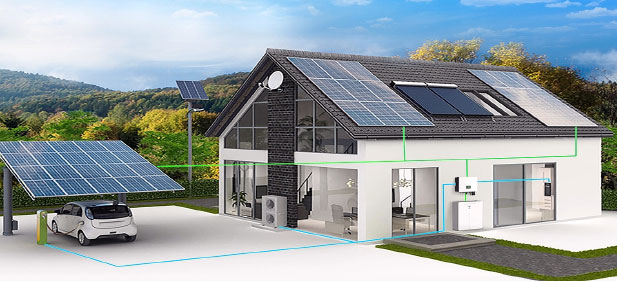
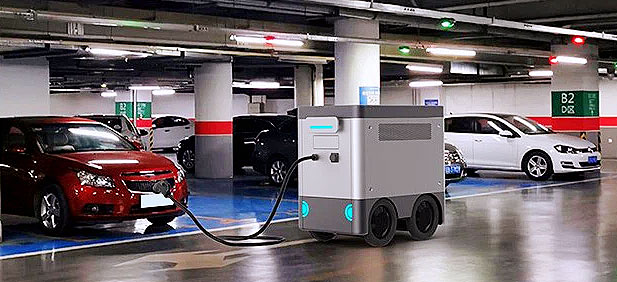










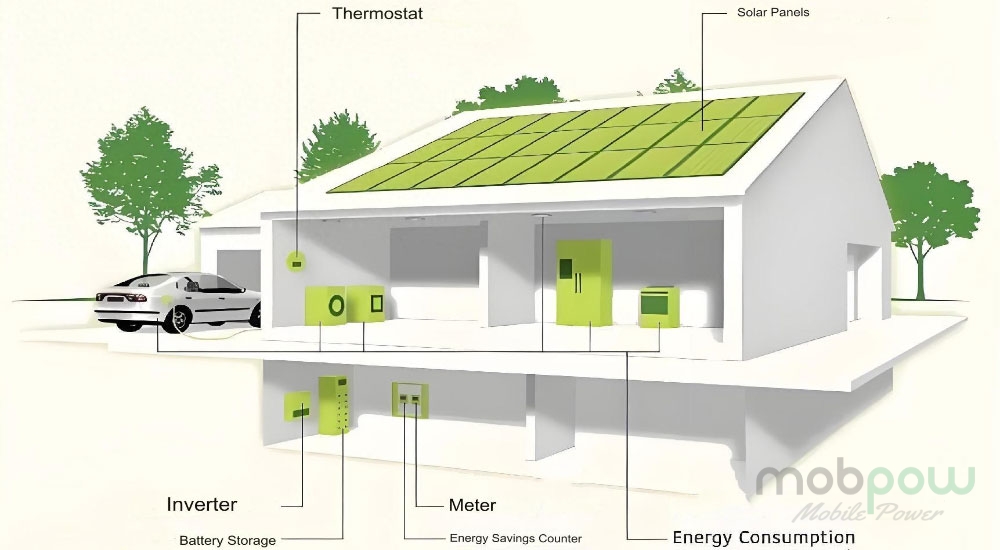
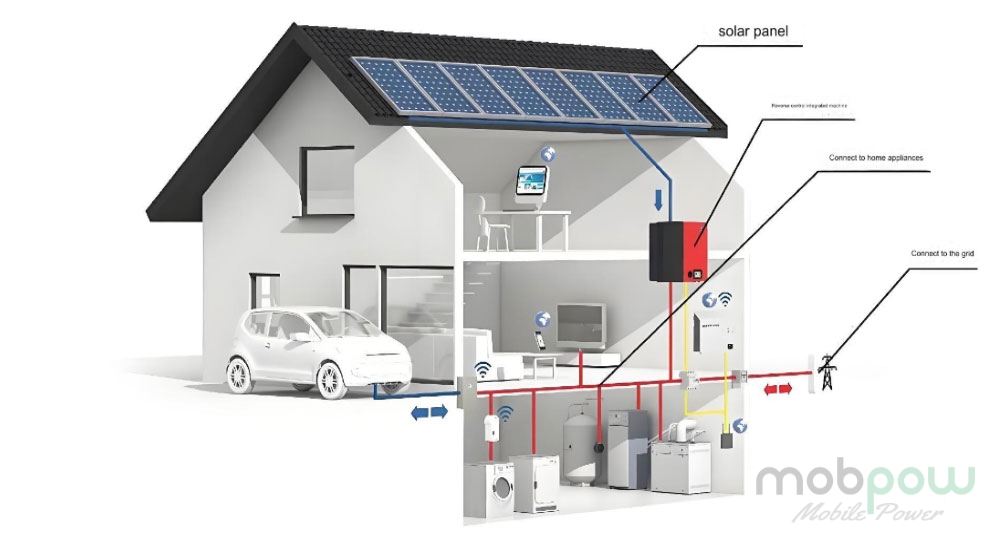

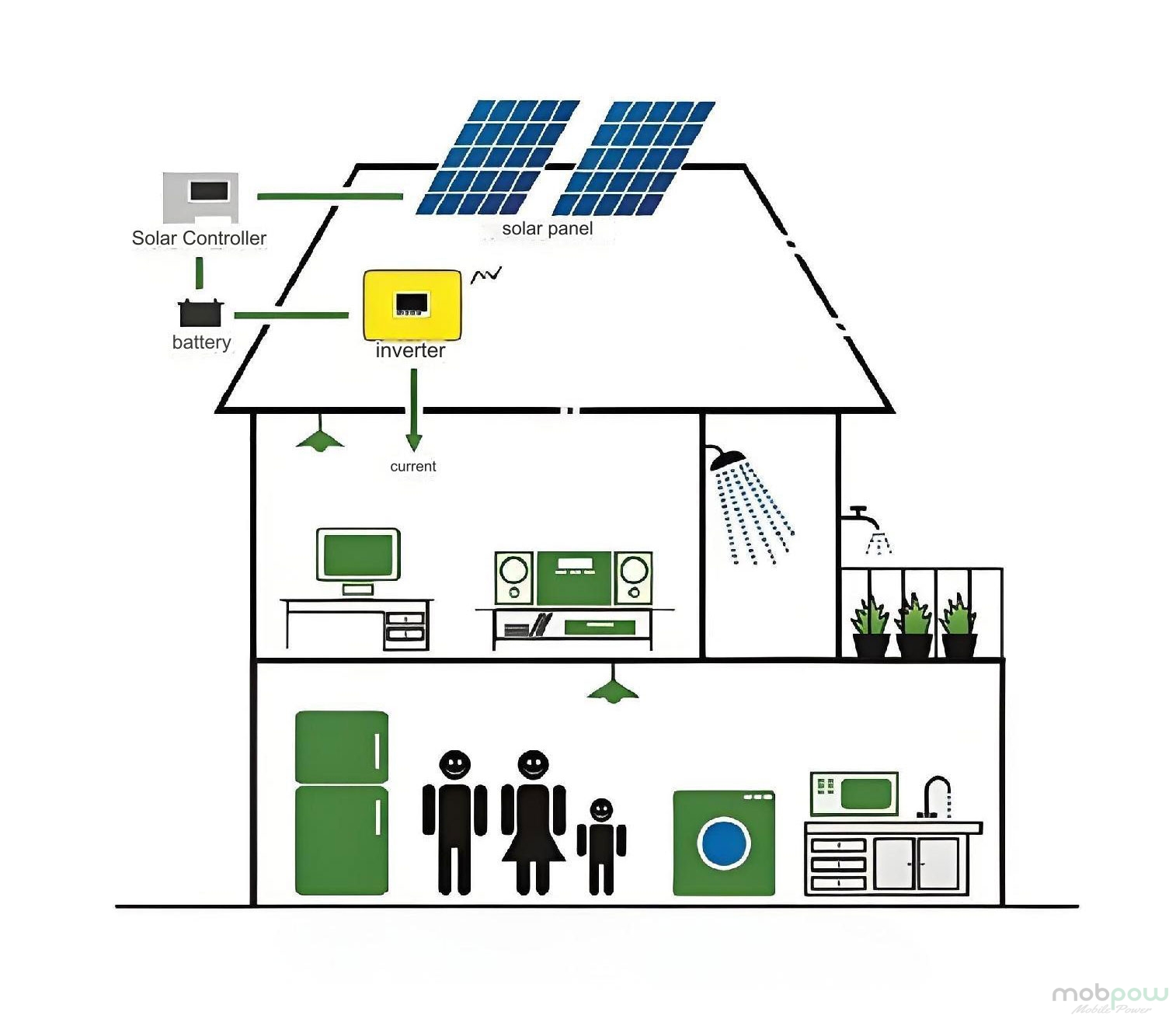
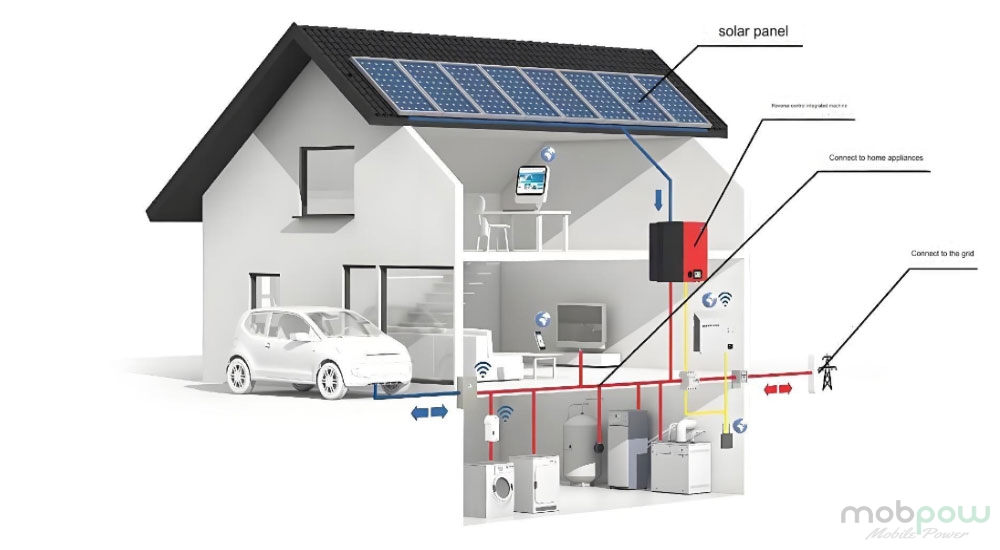
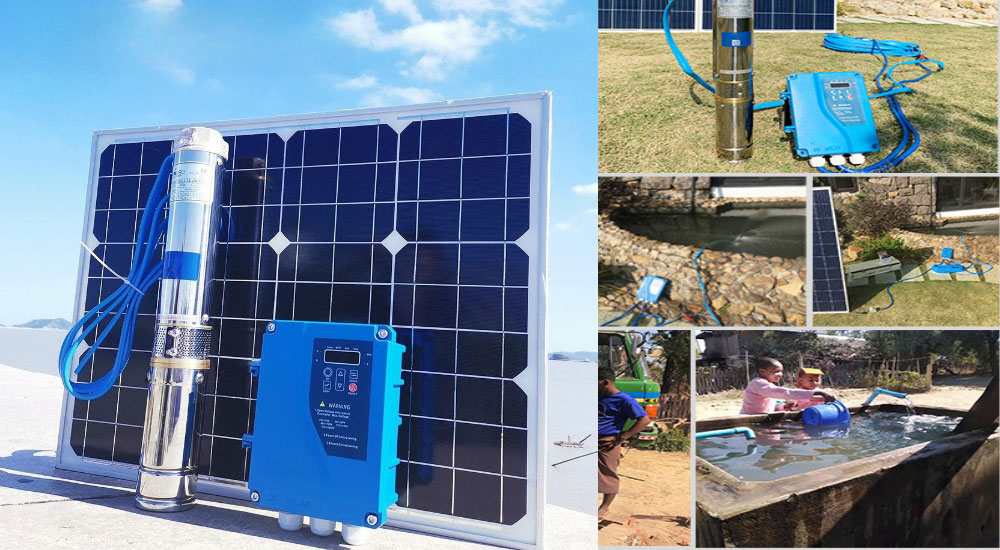
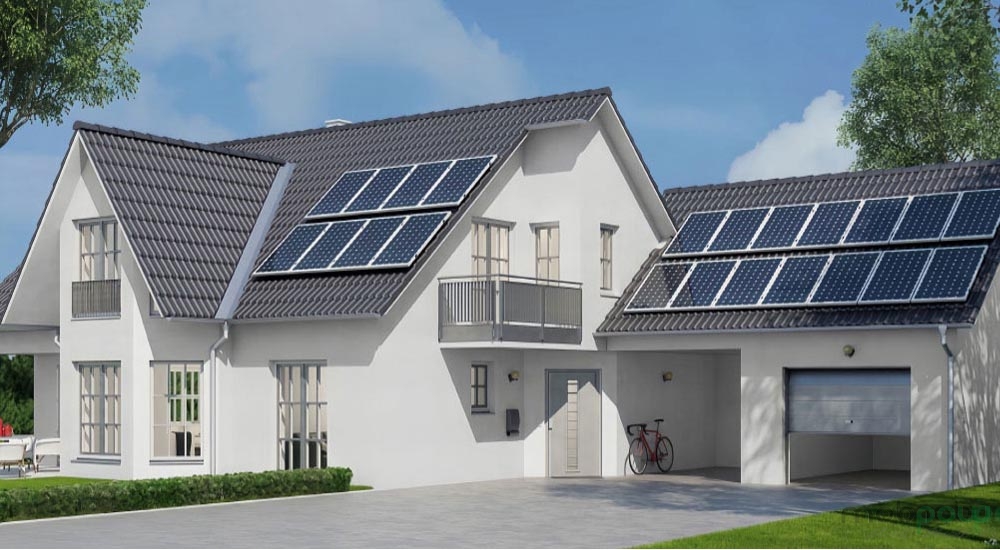
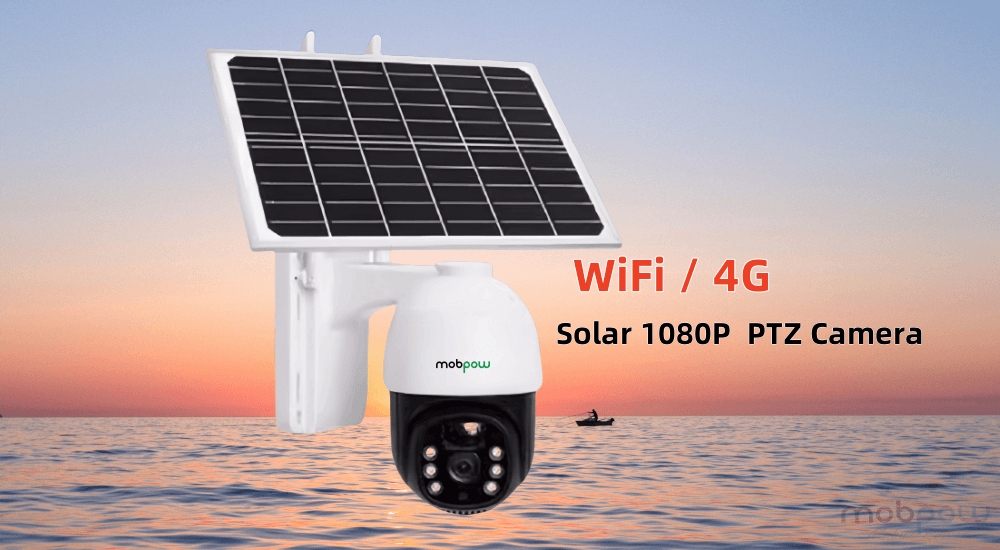
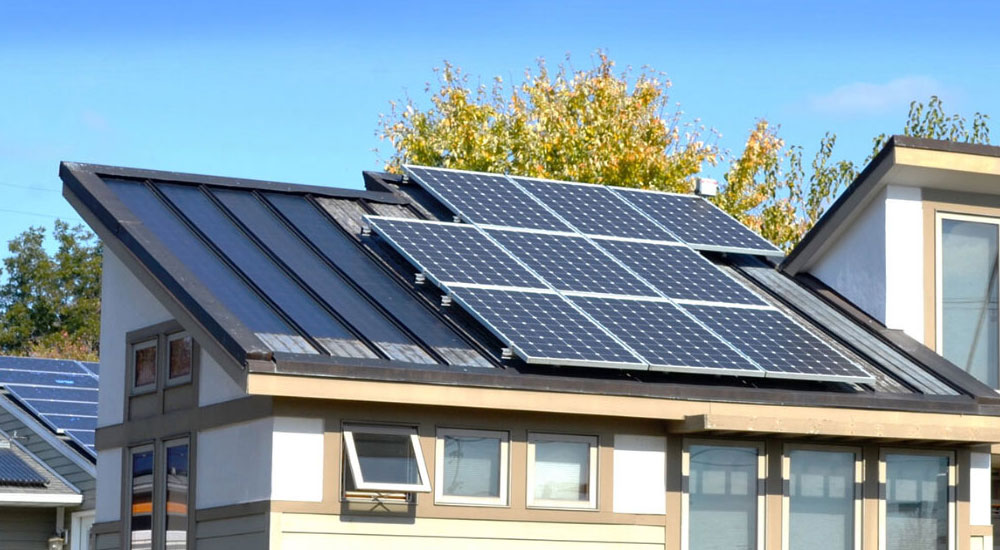
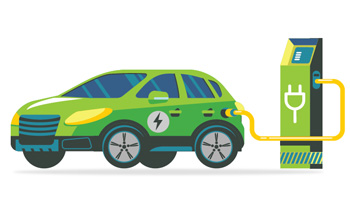
Smith Sunny says:
Smith Sunny says:
Smith Sunny says: